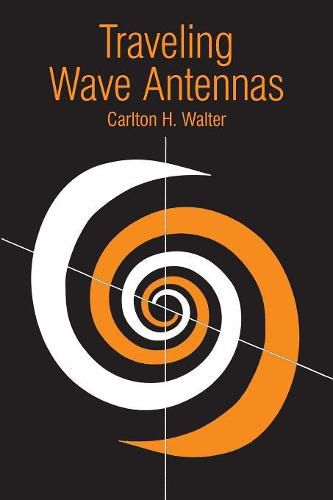Readings Newsletter
Become a Readings Member to make your shopping experience even easier.
Sign in or sign up for free!
You’re not far away from qualifying for FREE standard shipping within Australia
You’ve qualified for FREE standard shipping within Australia
The cart is loading…






This title is printed to order. This book may have been self-published. If so, we cannot guarantee the quality of the content. In the main most books will have gone through the editing process however some may not. We therefore suggest that you be aware of this before ordering this book. If in doubt check either the author or publisher’s details as we are unable to accept any returns unless they are faulty. Please contact us if you have any questions.
Assembled in textbook form are the important contributions to traveling wave antenna analysis, synthesis, design, wave excitation, and applications. Many of the references are not readily accessible to the English-speaking reader and it would be difficult to find this material as completely and carefully formulated elsewhere. Little more than differential and integral calculus, complex variables, and vector analysis are needed as background for this work. Copiously illustrated with graphs and diagrammatic material. The author, Dr. Carlton H. Walter, Professor Emeritus of Electrical Engineering at The Ohio State University, after reviewing antenna fundamentals and defining terms, presents analytical methods for determining the field of an antenna when the source distribution is known; the inverse problem of determining a source distribution to produce a specified field; design of a physical structure to produce a specified source distribution; traveling wave excitation; and design data for traveling wave antennas, surface wave lenses, spiral antennas, and backward wave antennas, including log-periodic antennas. Clearly written and organized, the text provides ample references and useful engineering problems at the end of each chapter. Traveling Wave Antennas is highly suitable for instruction, either as a reference in courses on antennas or as a first text on antennas at the advanced undergraduate or first-year graduate level. At the same time, the theoretician, researcher, and electrical engineer concerned with antenna design or development will find the book’s design data uniquely valuable. The practical designer, too, will gain insight from it.
$9.00 standard shipping within Australia
FREE standard shipping within Australia for orders over $100.00
Express & International shipping calculated at checkout
This title is printed to order. This book may have been self-published. If so, we cannot guarantee the quality of the content. In the main most books will have gone through the editing process however some may not. We therefore suggest that you be aware of this before ordering this book. If in doubt check either the author or publisher’s details as we are unable to accept any returns unless they are faulty. Please contact us if you have any questions.
Assembled in textbook form are the important contributions to traveling wave antenna analysis, synthesis, design, wave excitation, and applications. Many of the references are not readily accessible to the English-speaking reader and it would be difficult to find this material as completely and carefully formulated elsewhere. Little more than differential and integral calculus, complex variables, and vector analysis are needed as background for this work. Copiously illustrated with graphs and diagrammatic material. The author, Dr. Carlton H. Walter, Professor Emeritus of Electrical Engineering at The Ohio State University, after reviewing antenna fundamentals and defining terms, presents analytical methods for determining the field of an antenna when the source distribution is known; the inverse problem of determining a source distribution to produce a specified field; design of a physical structure to produce a specified source distribution; traveling wave excitation; and design data for traveling wave antennas, surface wave lenses, spiral antennas, and backward wave antennas, including log-periodic antennas. Clearly written and organized, the text provides ample references and useful engineering problems at the end of each chapter. Traveling Wave Antennas is highly suitable for instruction, either as a reference in courses on antennas or as a first text on antennas at the advanced undergraduate or first-year graduate level. At the same time, the theoretician, researcher, and electrical engineer concerned with antenna design or development will find the book’s design data uniquely valuable. The practical designer, too, will gain insight from it.